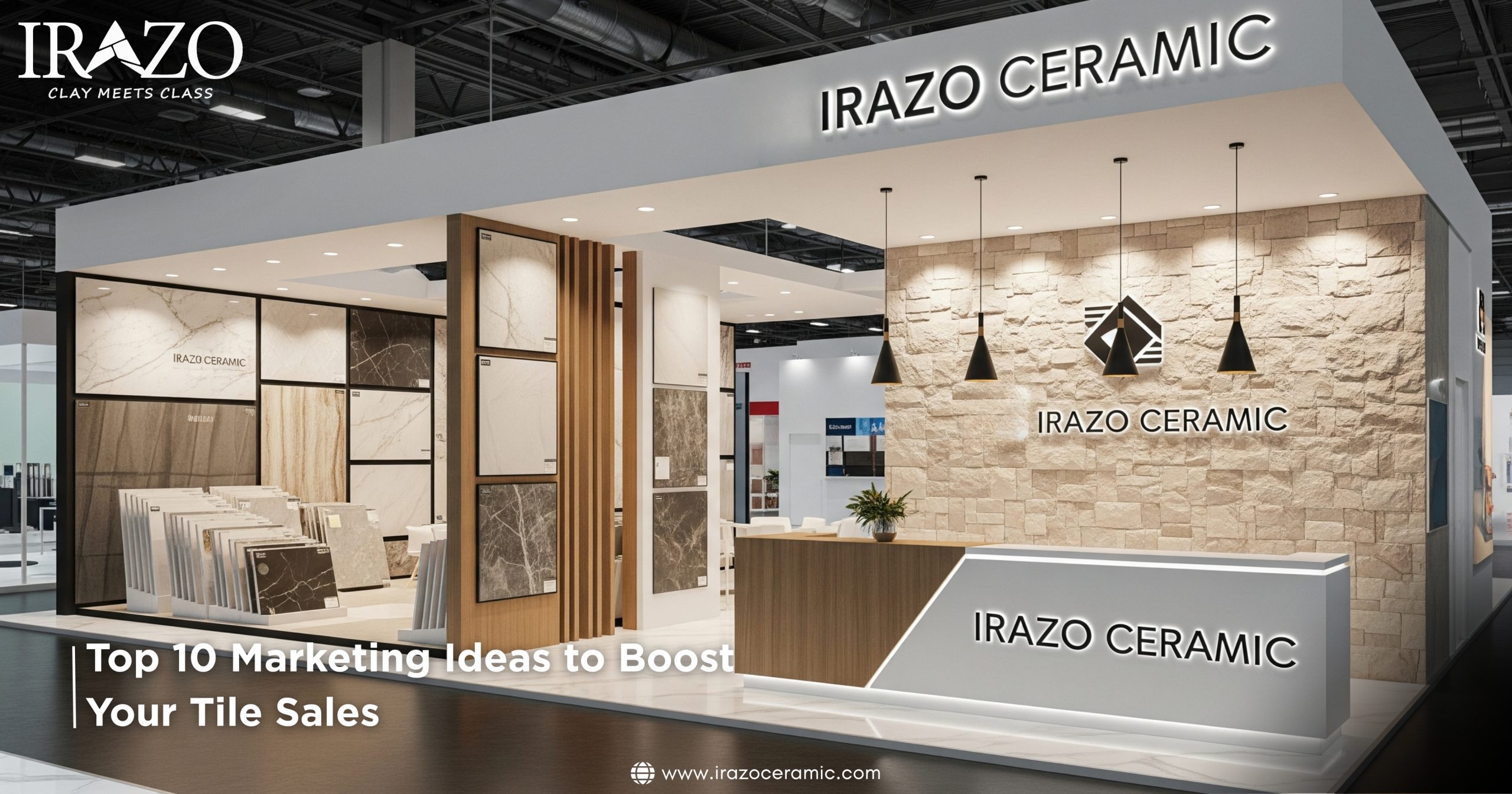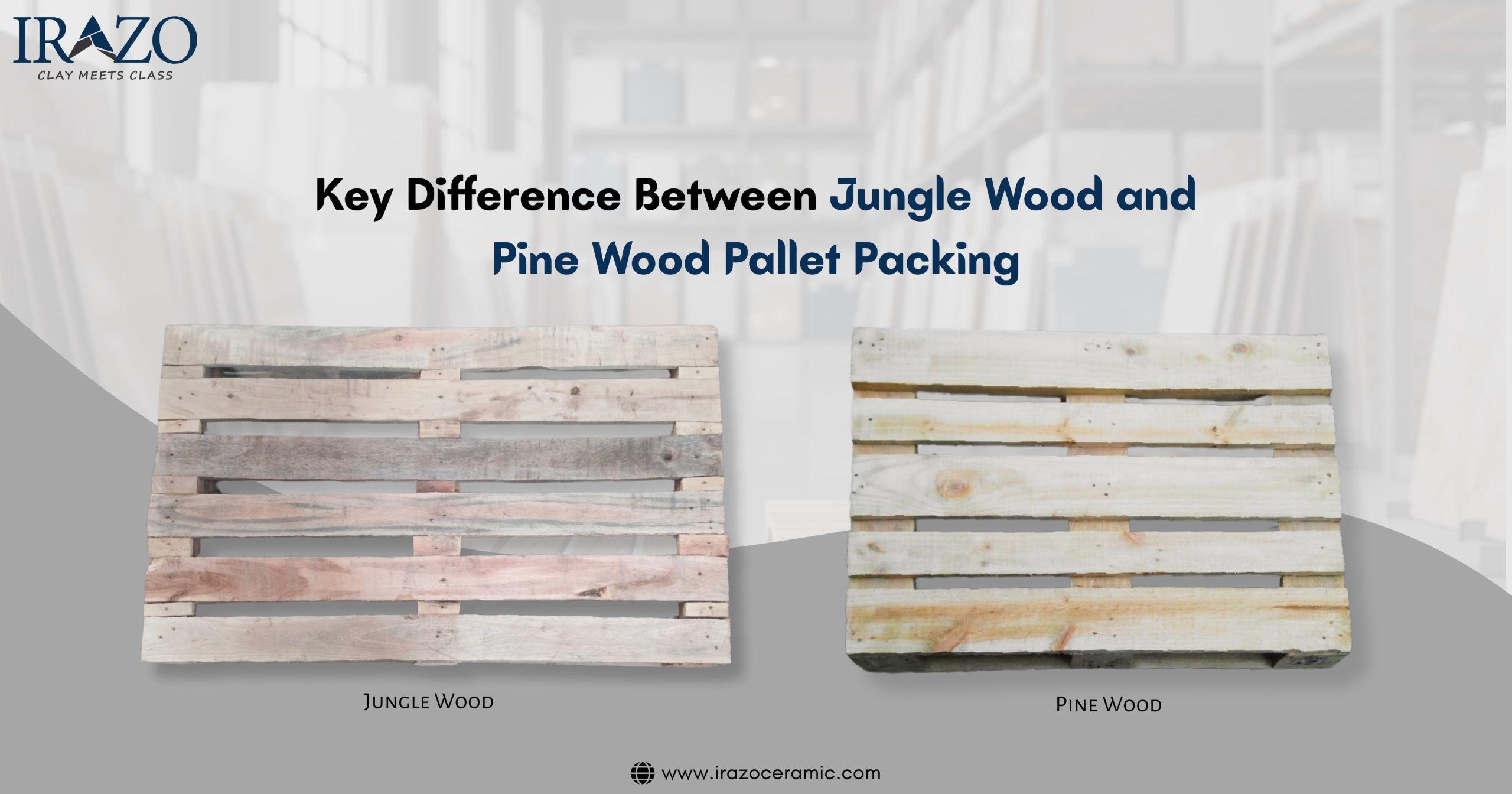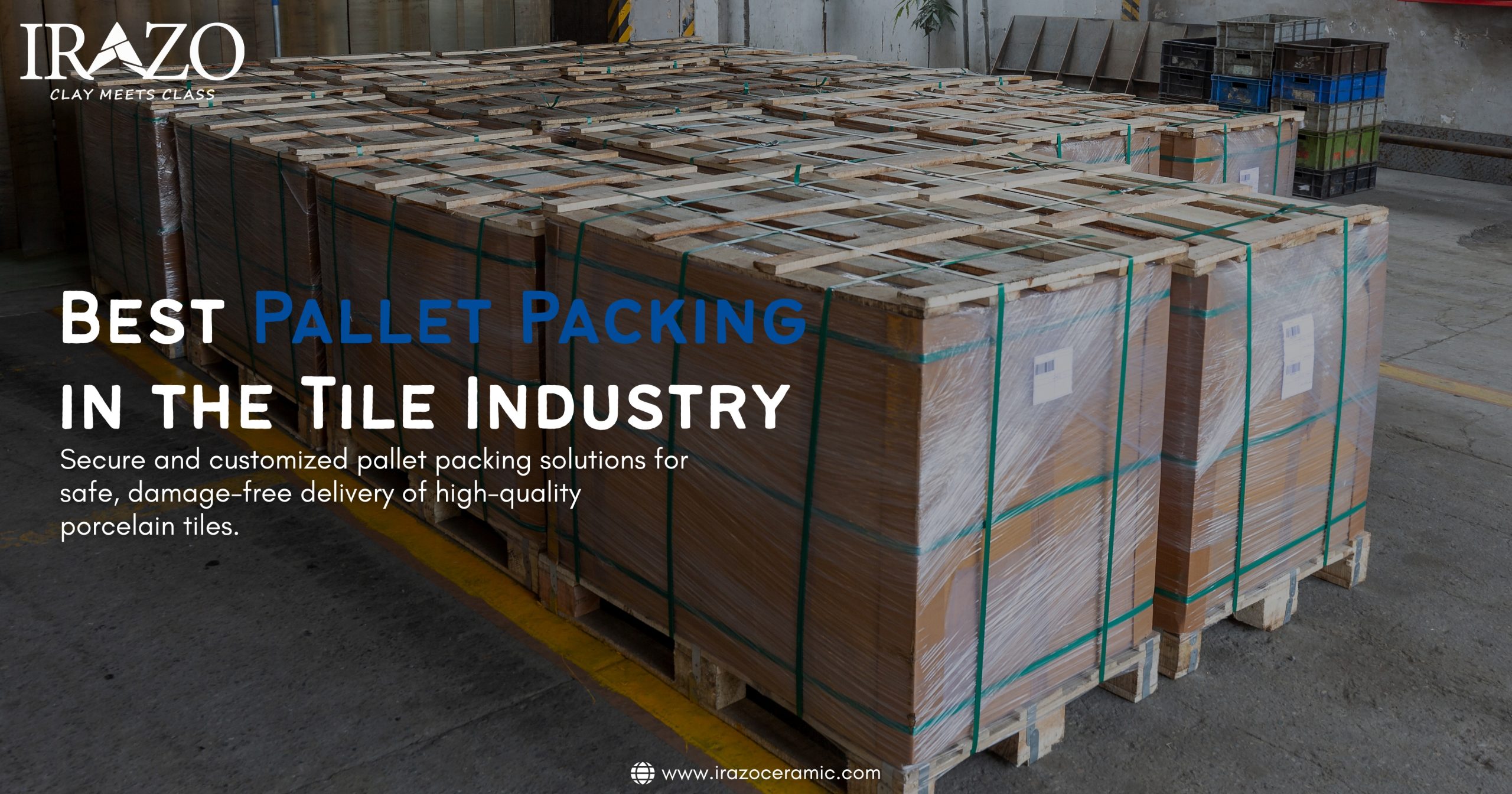In an industry as competitive and design-driven as tile manufacturing and distribution, simply offering quality products is not enough. The key to driving sales lies in implementing innovative, scalable, and creative marketing strategies that effectively reach and engage customers. Whether you are a tile manufacturer, a retailer, or a wholesaler, finding the best marketing idea to sell tiles can define your brand’s growth trajectory in 2025. In this blog, we will explore the most effective marketing approaches, proven advertising ideas, and insightful tile advertising strategies that will not only bring in more leads but also convert them into long-term customers.
1. Define a Distinct Brand Identity
The first step in any successful marketing campaign is building a clear and unique brand identity. Your tile business should have a well-defined brand personality—whether it’s luxury, minimalism, affordability, sustainability, or innovative design. This identity should reflect in all your communication—logo, packaging, social media visuals, and even store ambiance.
Why it Matters:
A strong brand identity helps customers associate your tiles with a specific feeling or value. When done right, it becomes a part of their buying decision. In a crowded marketplace, a recognizable and consistent brand can make your business stand out and stay top-of-mind when customers are ready to buy.
Tips:
Utilize color psychology and material design elements in your branding to emotionally connect with interior designers, architects, and homeowners. Consider creating a brand story that explains your values, design philosophy, and commitment to quality—this narrative can serve as the foundation for all your future tile advertising and marketing efforts.
2. Showcase Real-Life Applications Through Visual Storytelling
Tiles are a visual product. Customers often struggle to imagine how a tile will look in their homes. One of the most effective tile advertising techniques is visual storytelling—showcasing your tiles in real-life settings, such as bathrooms, kitchens, hallways, and exteriors.
How to Execute:
- Hire a professional photographer to capture high-quality installation images.
- Share 360° room tours or before-and-after renovation videos.
- Use Instagram and Pinterest to create inspiration boards.
Impact:
When customers can visualize how the tile will look in their space, their confidence to purchase increases dramatically.
3. Invest in Search Engine Optimization (SEO)
Being found online is crucial. If someone types “best tile showroom near me” or “durable bathroom tiles,” you want your business to appear at the top of search results. That’s where SEO becomes a top-tier marketing idea.
What You Can Do:
- Optimize your website with tile-related keywords.
- Create blogs answering customer queries (e.g., “Porcelain vs. ceramic tiles: Which is better?”).
- Use Google My Business to dominate local search.
Why It Works:
Organic search brings highly targeted traffic to your website without the high cost of paid advertising.
4. Utilize Targeted Google Ads and Social Media Ads
When it comes to advertising ideas, paid ads are powerful tools to bring immediate visibility to your tile collections. Google Ads allows you to target customers actively searching for tile products. Meanwhile, Facebook and Instagram Ads help in catching the eye of those in the inspiration phase.
Recommended Strategies:
- Run seasonal campaigns for new collections or discounts.
- Retarget website visitors with personalized offers.
- Use carousels or short videos to display tile variety.
- Highlight customer reviews or installation shots within your ad creatives to build trust instantly.
- Experiment with different ad copy and visuals to discover what resonates most with your target audience.
Start with a small budget, analyze performance, and scale the campaigns that work. Tools like Meta Ads Manager and Google Ads Insights provide detailed analytics to help you refine your targeting and messaging for better ROI.
5. Create a Tile Visualizer Tool on Your Website
One of the most impactful innovations in the tile industry is the tile visualizer tool. This interactive tool enables users to upload a photo of their room and preview how different tiles would look in real time.
Why This is the Best Marketing Idea:
It removes purchase hesitation, increases engagement time on the website, and creates an immersive experience that traditional catalogs cannot offer. Customers enjoy the freedom to experiment with color combinations, finishes, and patterns before committing. This level of interactivity not only enhances the buying journey but also significantly increases conversion rates.
Visualizers can also collect user data like email and preferences, which you can use for personalized follow-ups. You can even integrate AI-powered suggestions to recommend tiles based on user selections and room types, making the experience more innovative and engaging.
6. Partner with Interior Designers and Architects
Word-of-mouth remains one of the most trusted forms of marketing. By building strong relationships with interior designers and architects, you can turn them into ambassadors of your tile brand.
How to Do It:
- Offer trade discounts or referral commissions.
- Create exclusive catalogs tailored for professionals.
- Host workshops or design meetups in your showroom.
- Provide marketing support materials, such as sample kits and design swatches, to make their client presentations easier and more persuasive.
Long-Term Benefit:
A steady stream of repeat business from design professionals who trust your quality and service. These professionals also serve as key opinion leaders, recommending your brand in high-value residential and commercial projects, further expanding your brand presence in niche markets.
7. Leverage User-Generated Content and Testimonials
Nothing speaks louder than a happy customer. Encourage buyers to share pictures of their finished spaces and leave reviews. Feature these stories on your website, in emails, and on social media platforms.
Strategy:
- Run contests like “Best Tile Transformation” on Instagram.
- Offer a small discount for leaving a review with photos.
- Create case study videos showing the renovation journey.
Keyword Impact:
These genuine experiences act as subtle tile advertising while building social proof.
8. Attend Trade Shows and Local Expos
While digital marketing is critical, offline presence still matters—especially in the tile and home improvement industry. Participating in tile expos, interior design exhibitions, or building material trade shows enables you to engage directly with both B2B and B2C customers.
Tips:
- Design an interactive booth with live demos.
- Offer limited-time expo-only discounts.
- Capture leads via QR codes or digital registration.
Brand Recall:
Being seen in the right places increases credibility and brings your advertising ideas to life in an experiential format.
9. Offer Value Through Educational Content
Educating your customers is a soft-sell strategy that builds authority and credibility. Provide content that helps them make informed decisions—like blogs, eBooks, or how-to videos.
Content Ideas:
- “How to Choose the Right Tiles for Your Bathroom”
- “Top Tile Trends for 2025“
- “How to Maintain and Clean Your Porcelain Tiles”
Execution:
Use email newsletters and social media to distribute this content regularly. This keeps your brand top-of-mind without being too salty.
10. Build a Strong Online Presence with Influencer Marketing
Social media influencers, particularly those in the home decor and DIY niches, can have a significant impact on purchasing decisions—partner with micro-influencers who cater to your ideal customer segment.
Best Practices:
- Send them a sample box of your tiles.
- Ask them to document a DIY tile project.
- Co-host an Instagram Live session discussing design trends.
- Collaborate on content such as “tile styling tips” or “before-and-after makeovers” that their followers find educational and inspiring.
Result:
Authentic content creation that enhances your reach and visibility in a saturated market. Influencer partnerships also humanize your brand, making it more relatable and trustworthy for homeowners looking for ideas and quality assurance before purchasing tiles.
Use Data to Personalize Your Marketing
Modern marketing isn’t just about reach—it’s about relevance. Utilize tools such as Google Analytics, CRM software, and Facebook Pixel to gain insight into customer behavior and tailor your messaging accordingly.
Personalization Ideas:
- Send curated tile suggestions based on past browsing.
- Remind customers of tiles they viewed but didn’t buy.
- Offer personalized discounts during festivals or birthdays.
Advantage
Personalized marketing increases conversion rates and builds long-term loyalty.
Final Thoughts
Selling tiles in 2025 demands more than beautiful displays and great prices—it requires innovative, integrated marketing. By combining digital innovation with emotional storytelling and professional partnerships, you can stay ahead of the competition and build a sustainable, growing business.
To recap, the most effective marketing strategy for selling tiles is not a single tactic but a combination of high-performing strategies—such as investing in SEO, leveraging user-generated content, and implementing tile visualizer tools. Blend these with strong branding, targeted tile advertising, and strategic advertising ideas, and you’ll create a marketing ecosystem that not only boosts sales but also builds long-term customer trust.
Reference:
Marketing strategy by Wikipedia[1].
The four main marketing strategies are Product, Price, Place, and Promotion—often referred to as the 4 Ps of Marketing.
- Product refers to what you’re offering—in this case, your tile designs, materials, and features.
- Price involves your pricing strategy, such as competitive pricing, bulk discounts, or premium positioning.
- Place is about distribution—selling through retail stores, showrooms, online platforms, or through dealers.
- Promotion includes all your advertising efforts, from Google Ads and social media to exhibitions and influencer marketing. Strategically combining these efforts helps you reach the right audience and build a more substantial market presence.
To promote your tile business, focus on both online and offline strategies. Create a visually appealing website and utilize social media platforms like Instagram and Pinterest to showcase the real-life applications of your tiles. Invest in Google Ads and local SEO to reach nearby customers actively searching for tiles. Offline, participate in home expos, collaborate with interior designers, and offer sample kits or visualizer tools in your showroom.
Expanding your tile business involves scaling operations, enhancing brand awareness, and expanding into new markets. Start by analyzing your most profitable products and regions, then increase production or stock accordingly. Explore franchise models, open new showrooms, or partner with building material stores in other cities. Strengthen your digital presence through e-commerce and online marketing.
To boost sales, offer a diverse tile range that caters to different styles and budgets. Implement a tile visualizer tool on your website, allowing customers to preview installations. Provide seasonal discounts, referral bonuses, or loyalty programs to encourage repeat business. Train your sales staff to guide customers with design advice and product knowledge.


